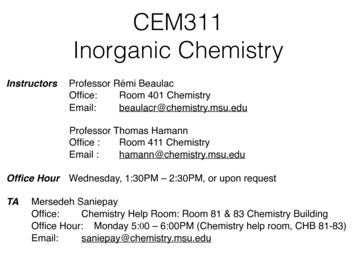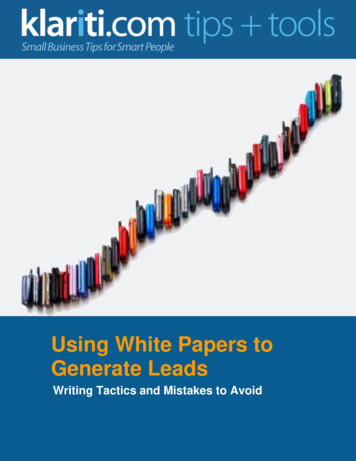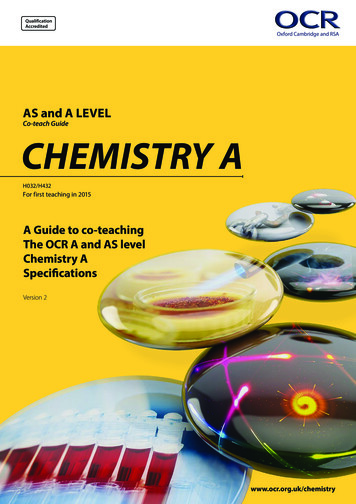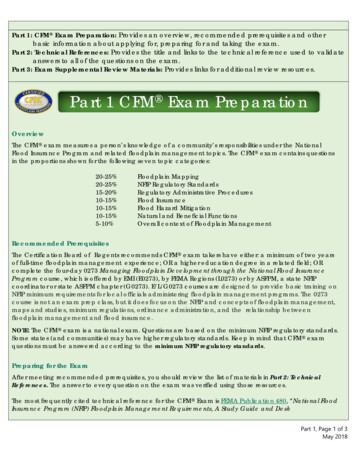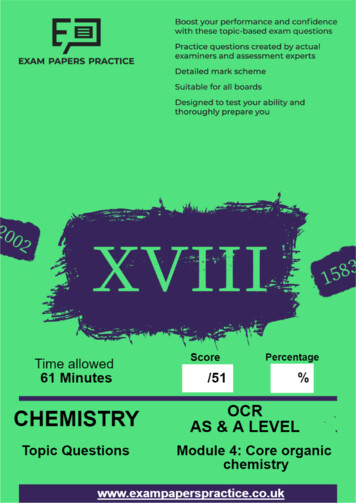
Transcription
OCRA-LevelCHEMISTRYCore Organic ChemistryHaloalkanes 2Time allowed61 minutesQUESTION PAPERScore/51Percentage%4.1 CELL BIOLOGY QUESTION PAPER 11
1A student carries out an investigation on some halogenoalkanes.(a) She decided to hydrolyse 1-bromopentane and 1-chloropentane using aqueous sodiumhydroxide.State and explain the difference in the rates of hydrolysis of 1-bromopentane and1-chloropentane. [2](b) A student wants to determine the structure of an unknown iodoalkane B.She knows that the molecular formula of B is C4H9I.The student heats B with aqueous sodium hydroxide. A reaction mixture forms containing theorganic compound C and I –(aq).(i)Draw all of the possible structural isomers for B.[4](ii)What is the molecular formula for compound C?. [1](iii)The student purifies compound C and splits it into two portions. She heats one portion of C with concentrated sulfuric acid. The product of thisreaction is methylpropene.To the other portion of C, she adds acidified potassium dichromate(VI) and heatsthe mixture under reflux. The product of this reaction is compound D.The infrared spectrum for compound D is shown at the top of page 19.PhysicsAndMathsTutor.comFor more help please visit our website www.exampaperspractice.co.uk
100transmittance(%)5004000300020001500wavenumber / cm–11000500Use this evidence to suggest structures for B, C and D.In your answer you should make clear how your explanations are linked to the evidence.PhysicsAndMathsTutor.comFor more help please visit our website www.exampaperspractice.co.uk
. [6][Total: 13]For more help please visit our website om
2A student carried out an investigation to compare the rates of hydrolysis of 1-iodopropane and1-bromopropane. The student heated hot aqueous sodium hydroxide with each halogenoalkaneand found that 1-iodopropane was hydrolysed faster.The equation for the reaction with 1-iodopropane is shown below.CH3CH2CH2I OH–(a) (i)CH3CH2CH2OH I –Outline the mechanism for this hydrolysis of 1-iodopropane.Show curly arrows and relevant dipoles.[3](ii)State the name of this type of mechanism. [1](b) Explain why 1-iodopropane is hydrolysed faster than 1-bromopropane. [2](c) Chlorofluoroalkanes, CFCs, were developed from fluoroalkanes and were used in aerosolsand as refrigerants. Under the Montreal Protocol, CFCs are now largely banned because oftheir ozone-depleting properties. CFCs have now been replaced in many applications.Suggest two reasons why there is still concern about ozone depletion. [2]PhysicsAndMathsTutor.comFor more help please visit our website www.exampaperspractice.co.uk
(d) Fluoroalkenes are used to make polymers. For example, PVF, (CH2CHF)n, is used to makenon-flammable interiors of aircraft.(i)Draw two repeat units of the polymer PVF showing all bonds.[1](ii)Draw the structure of the monomer of PVF.[1](e) Once polymers have been used, they become waste.Outline two ways that waste polymers are processed usefully, rather than just dumped inlandfill sites. [2][Total: 12]For more help please visit our website om
3Chlorofluorocarbons, CFCs, were once used as propellants in aerosols. CFCs contribute to ozonedepletion in the upper atmosphere.(a) A CFC has the formula CF2Cl2.State the three-dimensional shape of a CF2Cl2 molecule and the F–C–Cl bond angle.shape .bond angle . [2](b) Two reasons that CF2Cl2 was used as an aerosol propellant are that it has low reactivity andwill not hydrolyse in water.(i)State one other reason why CF2Cl2 was developed for use as an aerosol. [1](ii)Suggest why CF2Cl2 does not hydrolyse in water. [1](c) Explain, with the aid of equations, how the presence of CFCs in the upper atmosphere leadsto ozone depletion. [3](d) Why are scientists concerned about ozone depletion?. [1]For more help please visit our website om
(e) International agreements have reduced the use of CFCs. However the concentration ofatmospheric CFCs has hardly changed.Suggest two reasons why. [2][Total: 10]PhysicsAndMathsTutor.comFor more help please visit our website www.exampaperspractice.co.uk
4This question is about halogenated hydrocarbons.(a) Halogenoalkanes undergo nucleophilic substitution reactions with ammonia to form amines.Amines contain the –NH2 functional group.For example, 1-bromopropane reacts with ammonia to form propylamine, CH3CH2CH2NH2.CH3CH2CH2Br 2NH3(i)CH3CH2CH2NH2 NH4BrIodoethane is reacted with ammonia.Write an equation for this reaction. [2](ii)The first step in the mechanism of the reaction between CH3CH2CH2Br and NH3 isshown below. It is incomplete.HCH3CH2CHBrHCH3CH2C NH3 .HComplete the mechanism.Include relevant dipoles, lone pairs, curly arrows and the missing product.PhysicsAndMathsTutor.comFor more help please visit our website www.exampaperspractice.co.uk[3]
(b) A student investigates the rate of hydrolysis of six halogenoalkanes.The student mixes 5 cm3 of ethanol with five drops of halogenoalkane. This mixture is warmedto 50 C in a water bath. The student adds 5 cm3 of aqueous silver nitrate, also heated to50 C, to the halogenoalkane. The time taken for a precipitate to form is recorded in a resultstable.The student repeats the whole experiment at 60 C instead of 50 C.time taken for a precipitate to form / shalogenoalkaneat 50 Cat 60 )3CBrDescribe and explain the factors that affect the rate of hydrolysis of halogenoalkanes.Include ideas about the halogen in the halogenoalkanes the groups attached to the carbon of the carbon–halogen bond (the type ofhalogenoalkane) the temperature of the hydrolysis.In your answer you should link the evidence with your explanation.PhysicsAndMathsTutor.comFor more help please visit our website www.exampaperspractice.co.uk
. [7](c) Poly(tetrafluoroethene), PTFE, and poly(chloroethene), PVC, are halogenated plastics.(i)Write an equation, using displayed formulae, for the reaction to form PTFE from itsmonomer.[3](ii)The combustion of waste polymers can be used for energy production.What problem is caused by disposing of PTFE and PVC in this way?. [1][Total: 16]For more help please visit our website om
(c) Chlorofluoroalkanes, CFCs, were developed from fluoroalkanes and were used in aerosols and as refrigerants. Under the Montreal Protocol, CFCs are now largely banned because of their ozone-depleting properties. CFCs have now been replaced in many applications. Suggest two reasons why there is still concern about ozone depletion.





